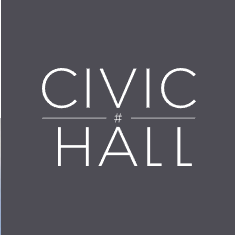HOW TO DESIGN A BETTER HACKATHON FOR ALL
- RUTH MILLER
- November 11, 2015
- 3:40 pm
As facilitators working with a vulnerable population, we could have better anticipated and mitigated the chilling effect of the media. Here are seven things organizers can do to better protect privacy during a workshop.

Civic hackathons, those technology-driven sprints for good, are both popular and potentially problematic. They can be exciting, stirring passions around important social issues. They offer the promise of improving lives. But they also risk squandering resources, producing tools that are often quickly abandoned, or at worst create unintended harm.
A common and valid criticism of hackathons is that they often rely on technologists with little or inaccurate knowledge of the selected cause.
Ask a bunch of upper-middle-class 20-somethings to improve access to healthy food, and you’ll invariably end up with a grocery store map. A person living in a food desert might have instead pointed out that the barriers to healthier eating are logistical, economic, and cultural, not purely informational. A food justice advocate might have suggested advancing substantial policy changes for long term gains. But at most hackathons—which generally run between six hours to a full weekend—time feels too short for such deep dives, and the need to produce a product can take priority over making sustainable impacts.
Making effective use of a hackathon’s focused, skilled, and cheap labor requires a more informed and humble approach. Anticipating this, some organizers recruit and engage participants with experiences that can inform the technical work. This focus on listening, questioning, and context is a great evolution, but, especially when dealing with sensitive issues and vulnerable populations, it introduces new risks.
Last month, I facilitated a portion of the Refugee Hackathon in Berlin, Germany. The event spanned three days, gathering nearly 300 developers and refugees to exchange ideas and create tools that ease the experience of being a refugee in Germany. It was the perfect combination of pertinent politics and optimistic technology; in short, it was a total media spectacle.
A key strength of the hackathon was the involvement of people with actual refugee experience—people who either were themselves refugees to Germany or who volunteer with newcomers. Theirs’ was a unique and powerful story, and its retelling has influence beyond one humble hackathon. But as the event unfolded, it became clear that maintaining a safe space for these vulnerable people to fully participate conflicted with the media presence.
The image of the noble technologist uplifting the helpless refugee (to apply a lazy stereotype) supports valuable narratives for many. The technologists get to look like heroes, with a new project for their portfolios. The event organizers receive attention for their popular event, which bolsters their credentials. Members of the media profit directly from collecting interviews and photos, as this is their job. But also indirectly, the mainstream German community benefits as it consumes this positive coverage, allowing them to feel like the crisis is being addressed.
Media coverage for a feel-good event is good for many, but how does it affect the people this event was intended to support—in this case, the refugees? Many participated on the explicit understanding that they would not be named, photographed, or filmed. These people came to Berlin to escape violence, leaving friends and family back home. I heard from several individuals worried that if those violent actors could identify them as having fled, friends and family they left behind would become targets. As facilitators, it was our duty to manage these priorities and craft an appropriate space.
We offered a “photo opt out” system. We provided red stickers, which, if put on a name tag, identified the individual as someone who did not consent to being photographed. We posted several signs explaining this system at registration and around the workshop spaces in four languages and with language-agnostic iconography. The facilitators took several opportunities to remind the room not to photograph people with red stickers. We asked the individuals with privacy concerns to raise their hands so everyone would know to avoid them in photos.
We also instructed the group that we would be following Chatham House Rules:
When a meeting, or part thereof, is held under the Chatham House Rule, participants are free to use the information received, but neither the identity nor the affiliation of the speaker(s), nor that of any other participant, may be revealed.
These rules are very popular at workshops where delicate information is to be shared, because it allows people to engage fully in the conversation.
In spite of these precautions, we still encountered several instances of worrisome media behavior. Some reporters were very respectful, chatting easily and maintaining a comfortable atmosphere. Others either missed the precautionary notices, or simply chose to disregard them. Eventually, two core issues emerged: obtaining informed consent and minimizing disruptions.
With so many media seeking group photos, the red sticker opt-out system quickly became difficult to enforce. When photographers did seek consent, the consent was not always informed.
One incident occurred when a reporter invited a French-speaking refugee to be photographed. Echoing a broader issue of underestimated diversity among Germany’s refugees, we had not anticipated the need to support French translation, so communicating with these refugees was problematic. The refugee asked where the photos would appear, the volunteer translator used his basic French to communicate an answer, and the refugee left with the reporter. Interestingly, the translator was not invited, because the journalist had no interest in what his subject had to say. Instead, the reporter posed the man outside for a few generic photos of a downcast refugee. Later, the refugee became concerned: he had understood that the photographer worked for the event organizers and did not want his photos published by a reporter. The translator flagged down a facilitator, and the photographer ultimately relented and deleted the photos. Effectively, the refugee hadn’t known what he was consenting to do, and the photographer hadn’t been clear about the potential consequences.
Even among the main language groups, the conspicuous cameras and frequent requests to “borrow” refugees and project managers led to constant disruptions. Remember: the explicit purpose of this workshop was to learn about the refugee experience firsthand from the refugees, identifying specific requirements and possible interventions. Allowing press to coerce participants into being “shared” soured the mood for many, and reduced the effectiveness of the event overall. The refugees weren’t the only ones visibly uncomfortable with the media presence—twice I overheard conversations among developers abruptly conclude or shift when a large television camera rolled up.
As facilitators, we could have better anticipated and mitigated the chilling effect of these reporters, writers, and photographers. Learning from these experiences, here are seven things organizers can do to protect privacy during a workshop.
- Offer an opt-out indicator that is very visible. We gave out stickers. We asked people opting out to raise their hands in front of the group. We gave polite but firm reminders when we saw violations. But still, we ended up spending a lot of time enforcing this system, instead of focusing on facilitating better outcomes. Our tiny stickers could have been much bigger. We could have given out red t-shirts, or at least a different color lanyards.
These identifiers should be visible if their wearer is across the room or turned away, and they should stand out in accidental photographs to ensure proper deletion.
- Ensure consent is both sought and informed every time. If there’s a risk the meaning isn’t wholly understood, take the time to find a better explanation. All photos can wait.
- Discourage people from opting out of photos for solidarity. This one is controversial, and deserves discussion. Everyone should want to support people who need to opt-out from photography, but as I experienced it, we can’t do that by diminishing the seriousness of those requests. I attended an event years ago where only one person opted out. We paused to wave at him, and he stood behind the camera for group photos. Because he was easy to remember, we all scanned the room to find him before taking any photo, ever. We made it easier to take safe photos by reducing the number of people to actively avoid photographing.
- As a participant, support opt-out requests. If someone prefers not to be photographed, actively locate them as being outside your frame before snapping a photo. Keep an eye out for cameras at the event, and help review photos on social media later. If you see a consent violation, either intervene politely and firmly, or seek out a facilitator.
- As a facilitator, empower your team both to enforce privacy requests and minimize disruptions. You want your participants to feel comfortable handling or reporting issues, and you want your team to feel comfortable taking appropriate action.
- Allow for non-disruptive media engagement. If you expect a media presence, carve out time, space, or people where press can safely participate. Media access does not need to be a default.
- Anticipate how skewed media access could misrepresent your event. A few of our participants arrived with fully formed projects, and put the time we dedicated to listening to refugees towards courting the media. As a result, projects with the least refugee input came to occupy a disproportionate amount of exposure from the refugee-legitimized event.
- Offer an opt-out indicator that is very visible. We gave out stickers. We asked people opting out to raise their hands in front of the group. We gave polite but firm reminders when we saw violations. But still, we ended up spending a lot of time enforcing this system, instead of focusing on facilitating better outcomes. Our tiny stickers could have been much bigger. We could have given out red t-shirts, or at least a different color lanyards.
Hackathons can be fun, inspiring, or challenging, and it’s natural for people to want to capture these experiences. As the hackathon model continues to evolve, and acknowledges the diversity of experiences needed for success, privacy and safety must become key operating principles.
Ruth Miller is a facilitator, interaction designer, and researcher based in Oakland, California.

